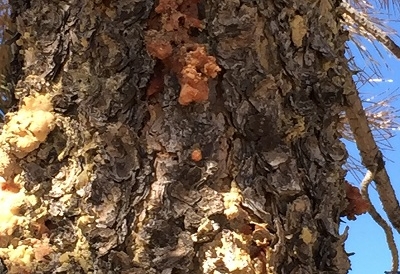For questions about managing pinon ips bark beetles, call (720)248-0000.
Piñon pines are beautiful trees to have in Colorado gardens. There is a major threat to them, though. Due to warmer temperatures and lower precipitation, there is a resurgence of the piñon Ips
This insect specifically attacks the piñon pines, killing more piñon trees than any other bark beetle or pest in the area. There is a small need for them when it comes to the trees that have fallen or are weakened or dying. However, the growing number of the beetles in the area have lead to the destruction of healthy trees.
It’s up to Colorado residents to do what they can to help protect their piñon trees from the beetles. The Colorado State Forest Service has a quick guide to help manage the situation.
Management of Pinon Ips Beetles Starts With Cutting Trees
If you spot trees that are infested with the Ips beetles, you’ll need to cut them down. This is the only way to reduce the risk of the colony growing and spreading to other trees in the area. You’ll need to make sure no green wood remains on the site at all before late March.
You can tell when the beetles have left the trees. The bark has already cracked and the tree is already dry and splitting. This means the beetles have moved on because there’s no nourishment to take. You’re safe to cut the trees down without the risk of spreading the colony further. You’ll want to get rid of the trees anyway as they’re not a high risk for spreading wildfires in the summer.
Avoid cutting the trees between April and October unless necessary. Between October and November is a good time to start, but you’ll want to handle as much as you can between November and February as the beetles are inactive at this time.
Water the Trees in the Winter
You’ll need to make sure the trees you are keeping are watered in the winter months. Conifer trees will need moisture all year round for the needles that remain. However, you’ll want to water other trees to help avoid drought problems later, which will lead to an infestation of the beetles.
Apply mulch around the base of the trees around a foot or two away from the bark. You’ll need to spread the mulch out to match where the branches of the trees reach on the edges. This is a sign as to how far out the roots spread.
Water regularly when the temperatures are above freezing. When there is snow on the ground, you don’t want to water as there will be moisture and you don’t want to disrupt the insulation around the roots.
Spray the Trees
Finally, you’ll need to spray the trees twice a year with a chemical that is known to prevent the bark beetles. Contact SprayTech to get on the list for spraying trees.

